
Introduction: The Ramesseum Complex
The Ramesseum Complex Perched along the western shores of the majestic Nile River in the time-honored city of Luxor, Egypt, the Ramesseum temple complex serves as an enduring tribute to the ingenuity and artistic prowess of ancient Egyptian culture. Erected during the illustrious era of the 19th Dynasty in the New Kingdom, this awe-evoking structure is consecrated to the venerated pharaoh Ramses II, colloquially hailed as Ramses the Great, whose dominion carved a lasting legacy in the annals of time. This extraordinary testament stands not only as a monumental feat of engineering but also as a profound manifestation of the spiritual and cultural significance that Ramses II held for his people.

The Ramesseum ComplexThe location itself, nestled on the west bank of the Nile, imparts a sense of grandeur and serenity. As the lifeblood of ancient Egyptian civilization, the Nile River was not only a source of sustenance but also a conduit of cultural exchange. The Ramesseum Complex The city of Luxor, once known as Thebes, was an epicenter of religious and political power, and the Ramesseum, with its commanding presence, was a physical manifestation of this authority The Ramesseum Complex
The Ramesseum Complex The 19th Dynasty, often hailed as a Renaissance period in Ancient Egypt, witnessed an unparalleled flourishing of art and architecture. It was during this epoch that Ramses II ascended the throne, and under his visionary rule, the Ramesseum Complex in Egypt experienced an era of prosperity and cultural renaissance. The Ramesseum, as a dedicated temple complex, was conceived not only as a place of worship but also as a repository of history and a testament to the enduring reverence for Ramses II.

The Ramesseum Complex In the ensuing passages, we shall embark on a journey through the hallowed halls of the Ramesseum, exploring its architectural marvels, deciphering the intricate hieroglyphics that adorn its walls, and unearthing the stories that echo through the corridors of time. The Ramesseum Complex Each stone and inscription is a fragment of a larger narrative, a testament to the indomitable spirit of an ancient civilization and the pharaoh who left an indelible mark on the Ramesseum Complex.
- Ramses II: The Pharaoh of Eternal Legacy IN Ramesseum Temple Complex,
The Ramesseum Complex, known to history as Ramses the Great, ascended to the throne of ancient Egypt in 1279 BCE, marking the commencement of an illustrious reign that would leave an indelible mark on the annals of history. The Ramesseum Complex This pharaoh, whose name resonates through the ages, emerged as one of Egypt’s most celebrated and influential rulers. His reign, spanning an impressive six decades, witnessed a flourishing of art, architecture, and military conquests, solidifying his status as a colossus of ancient Egyptian history The Ramesseum Complex

The Ramesseum Complex Born into the Nineteenth Dynasty of the New Kingdom, Ramses II inherited a kingdom poised for greatness. His father, Seti I, had laid the foundation for a prosperous era, and Ramses II took up the mantle with unbridled ambition. From the onset, he displayed an uncanny prowess for leadership, embarking on an ambitious agenda of expansion and consolidation of the Ramesseum Complex.
The Ramesseum Complex One of Ramses II’s enduring legacies lies in his military exploits. He orchestrated a series of campaigns that expanded Egypt’s territorial reach to unprecedented extents. His decisive victory at the Battle of Kadesh against the Hittite Empire stands as one of his most celebrated achievements. Though the battle itself ended in a stalemate, Ramses II’s strategic acumen and diplomatic prowess ultimately secured a peace treaty with the Hittites, marking a testament to his diplomatic finesse Ramesseum Complex

The Ramesseum Complex Yet it was not only on the battlefield that Ramses II left his mark. His reign witnessed a renaissance of art and architecture, exemplified by the construction of grandiose temples and monuments. The Ramesseum, his mortuary temple complex located in Luxor, remains a testament to his architectural vision. Adorned with intricate reliefs and monumental structures, it stands as a living tribute to the grandeur of the ancient Egyptian civilization’s Ramesseum Complex.
The Ramesseum Complex Among the most iconic features of Ramses II’s reign is the colossal statue that bears his likeness. Originally towering at an awe-inspiring height of 17 meters (56 feet), this statue once stood as a sentinel within the Ramesseum. Though the ravages of time have taken their toll, the remnants that remain still exude an air of regality, offering a glimpse into the majesty that once graced the temple complex. This statue, an artistic marvel, not only served as a representation of Ramses II’s physical form but also encapsulated his divine stature and cultural significance in the Ramesseum Complex.

The Ramesseum Complex Religion played a pivotal role in Ramses II’s rule. He was a fervent devotee of the pantheon of Egyptian gods, and his reign witnessed a resurgence of religious fervor. The temple complexes constructed during his reign were not merely architectural marvels; they were sanctuaries where religious ceremonies and rituals unfolded in fervent devotion to the gods. The Ramesseum Complex This spiritual devotion not only solidified his rule but also endeared him to the hearts of his subjects.
As the sands of time continue to flow, Ramses II’s legacy endures. His influence reverberates through the centuries, a testament to the enduring impact of a pharaoh whose reign witnessed the zenith of ancient Egyptian civilization. The grandeur of his monuments, the artistry of his statues, and the strategic brilliance of his military campaigns all stand as testaments to a ruler whose vision and ambition shaped the course of history.

In conclusion, Ramses II, or Ramses the Great, remains a towering figure in the annals of ancient Egyptian history. His reign was characterized by military triumphs, architectural marvels, and a profound spiritual devotion. Through his indomitable legacy, Ramses II stands as a beacon of enlightenment, an eternal testament to the grandeur and sophistication of ancient Egyptian civilization.
2. Unearthing Epochal Significance
The Ramesseum Complex Venturing into the annals of history, we embark on a profound exploration of the Ramesseum’s historical resonance. This journey takes us back to the illustrious era of the New Kingdom, a pivotal epoch in the chronicles of ancient Egypt, marked by the ascendance of Ramses II to the throne. In Luxor, a city steeped in cultural and spiritual heritage, this temple complex emerged as an emblem of monumental significance.

The New Kingdom, often hailed as a Renaissance period, witnessed the zenith of ancient Egyptian civilization. Ramses II, an iconic pharaoh, reigned with unparalleled influence and vision, leaving an indelible mark on the sands of time. The Ramesseum, nestled in the heart of Luxor, was more than mere stone and mortar; it was a testament to Ramses II’s sovereignty, a place where history and divinity converged.
The Ramesseum Complex Within its hallowed halls, the Ramesseum bore witness to a tapestry of political, cultural, and religious events. It was here that the pharaoh’s authority intertwined with the spiritual aspirations of a civilization. The temple complex became a sanctified stage for the enactment of sacred ceremonies and rituals, meticulously crafted to honor Ramses II’s enduring legacy. Each stone and each inscription spoke volumes about the profound reverence bestowed upon the pharaoh.
The Ramesseum Complex As we excavate the layers of time, the Ramesseum stands as a sentinel of antiquity, a living testament to an era when Luxor thrived as the pulsating heart of EgyptThe Ramesseum Complex Through the corridors of history, it beckons us to decipher the enigmatic language of ancient Egypt and grasp the monumental role it played in shaping the destiny of civilization. In unraveling its historical tapestry, we unravel the essence of a bygone era, where the echoes of Ramses II’s reign still resonate.
3. Architectural Splendors
The Ramesseum stands as a resplendent tribute to the unmatched craftsmanship and visionary acumen of ancient Egyptian architects. This section unveils the intricacies of the complex’s design. The Ramesseum Complex unveils a symphony of architectural marvels that continue to astound even in modern times.
The Ramesseum Complex The journey begins in the expansive courtyard, where the immensity of the structure first envelops visitors. This open expanse, flanked by colossal walls, was a canvas upon which the ancient builders wielded their expertise. It served as a threshold to a realm of spiritual significance, where rituals and ceremonies unfolded beneath the boundless skyThe Ramesseum Complex.
The Ramesseum Complex As one ventures deeper, the hypostyle hall emerges, an awe-inspiring testament to architectural mastery. Adorned with towering columns, each etched with its own story, this hall was a sanctuary of grandeur and symbolism. The play of light and shadow on the intricately carved surfaces creates an ambiance of sacred reverence, leaving an indelible impression on those who pass through.
Among the most revered spaces within the complex is the sanctuary, a hallowed chamber that served as the epicenter of religious devotion. Here, the presence of the divine is intermingled with mortal existence—a profound intersection of the earthly and the ethereal. Its design, carefully calibrated and adorned, reflects a reverence for the spiritual dimensions that permeated every facet of ancient Egyptian life.

The Ramesseum Complex In every nook and cranny, the Ramesseum whispers the secrets of its creation. The meticulous alignment of stones, the symmetrical placement of columns, the harmonious blend of form and function—each detail is a testament to the artistry and engineering prowess of a bygone era. As we traverse this architectural tapestry, The Ramesseum Complex we come to understand that the Ramesseum is not merely a structure; it is a living embodiment of a civilization’s devotion to the divine, a beacon of inspiration across the ages.
4. Storied Icons
The Ramesseum Complex A crowning jewel of the Ramesseum, the colossal statue of Ramses II commands awe and reverence. This section embarks on an exploration of the profound historical and artistic resonance that emanates from this monumental sculptureThe Ramesseum Complex.
Crafted in the image of Ramses the Great, the statue stands as a testament to the unwavering legacy of this revered pharaoh. Its colossal proportions and intricate detailing bespeak the meticulous artistry of the craftsmen who sculpted it, immortalizing the likeness of a ruler whose influence transcended time Ramesseum Complex.

Originally towering at a remarkable height of approximately 17 meters (56 feet), the statue held court within the Ramesseum, a sentinel of Ramses II’s enduring presence. Though time has weathered its form and fragmented its figure, the remnants that remain still evoke a profound sense of the statue’s original grandeur, offering a glimpse into the majesty that once graced the temple complex.
The artistic representation of Ramses II in this colossal form was not merely an exercise in physical likeness but a manifestation of his divine stature and cultural significance. Every chiseled detail, every meticulously sculpted feature, served as a conduit for the pharaoh’s divine aura to resonate through the ages.
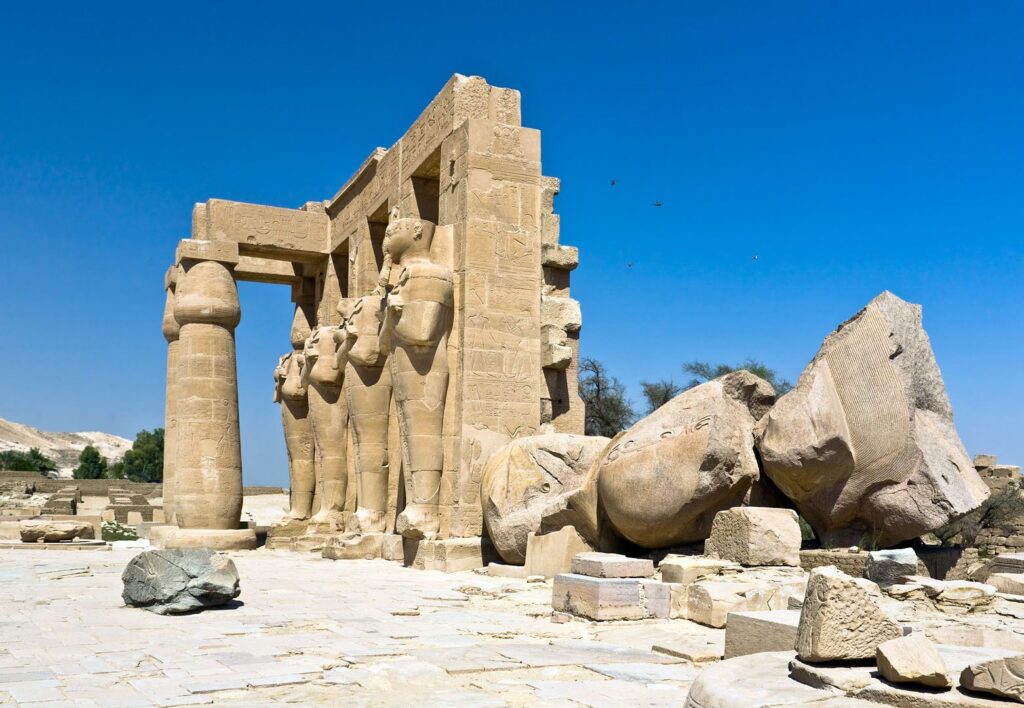
As visitors stand in the shadow of this monumental figure, they are transported back in time, immersing themselves in the aura of a ruler who shaped the course of history. The colossal statue, though weathered by the sands of time, stands as an indomitable symbol of Ramses II’s enduring legacy, an artistic testament to his indelible mark on the world. Through its towering presence, the statue invites us to bear witness to the greatness that once walked the earth, leaving an indelible mark on the tapestry of ancient Egypt.
5. Pictorial Narratives
The Ramesseum’s walls bear witness to an opulent tapestry of inscriptions and reliefs, each a vibrant tableau recounting the life, triumphs, and spiritual devotion of ancient Egyptians. This section unveils the artistry and symbolism woven into these depictions, illuminating the cultural and religious significance they hold.
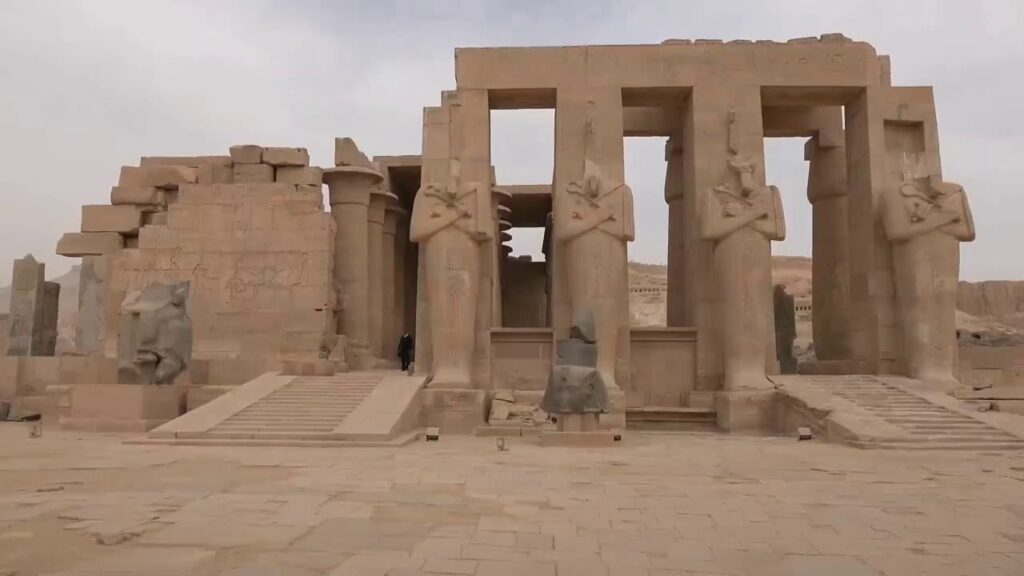
Hieroglyphics, the sacred script of ancient Egypt, adorn the walls, their intricate symbols etched with precision and purpose. Each glyph is a portal to a bygone era, a script that once conveyed the aspirations, beliefs, and stories of a civilization. As one deciphers these ancient characters, the very essence of Egyptian life and culture comes to life.
Artistic depictions, meticulously rendered with a finesse that belies the passage of millennia, breathe vitality into the stone canvases. Scenes of daily life, military conquests, and religious ceremonies unfold before the beholder’s eyes, offering a vivid window into the multifaceted world of ancient Egypt. Each figure and each gesture is a brushstroke in a tableau that weaves together the narrative of a civilization’s existence.
Religious imagery permeates the reliefs, a testament to the profound spiritual reverence that animated ancient Egyptian society. Gods and goddesses, entwined in acts of devotion and adoration, grace the walls in a vivid display of piety. These scenes serve not only as artistic renderings but as a conduit for the divine, a visual hymn to the gods who watched over and guided the people of this ancient realm.
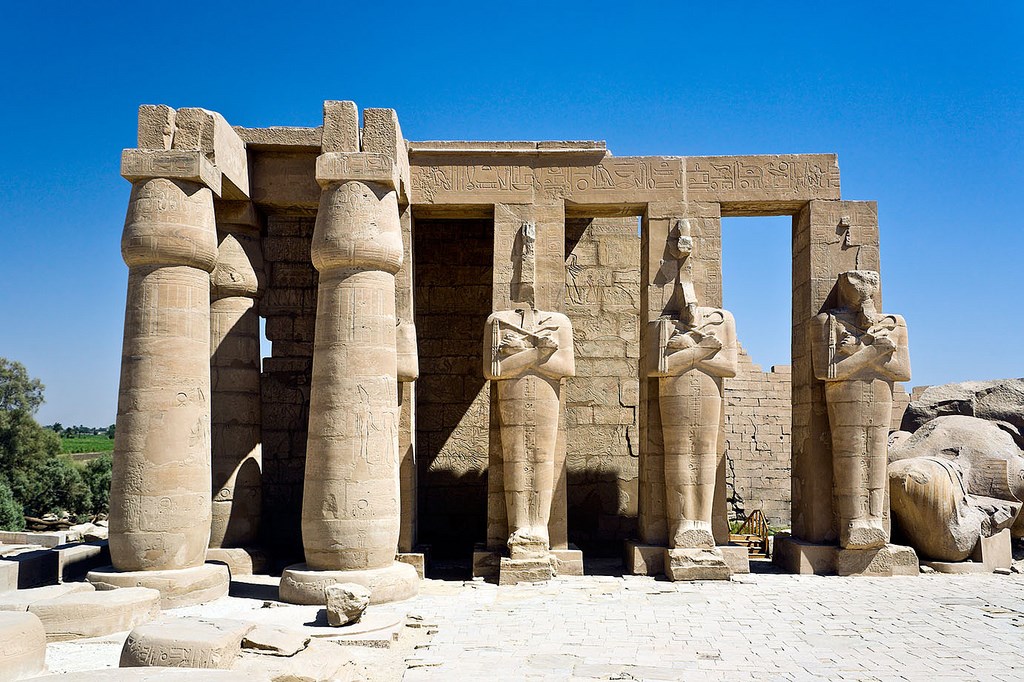
As we stand amidst these inscriptions and reliefs, we are not merely observers; we are participants in a visual symphony that reverberates through time. Each stroke of the chisel, each carefully etched hieroglyph, is a testament to the enduring legacy of a civilization that sought to immortalize its essence in stone. The walls of the Ramesseum, adorned with their pictorial narratives, beckon us to unravel the stories they hold, inviting us to partake in the cultural tapestry of ancient Egypt.
6. Safeguarding a Timeless Legacy
Through the passage of time, the Ramesseum has weathered the trials imposed by nature’s fury and the touch of human endeavors. This section stands as a testament to the unyielding commitment to the preservation and protection of this irreplaceable archaeological treasure, safeguarding it for the wonderment of generations yet to come.
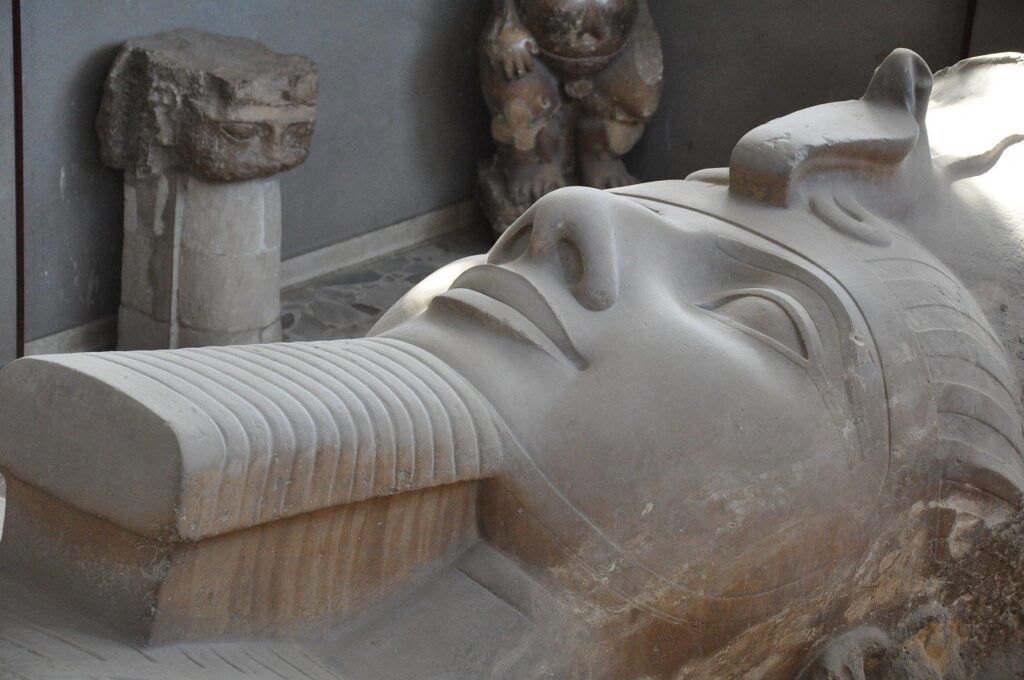
Natural disasters, with their unforgiving force, have tested the resilience of the Ramesseum. Earthquakes and other elemental upheavals have left their mark, prompting a call to action to restore what time and nature have sought to erode. Through meticulous restoration efforts, skilled hands have worked tirelessly to mend the fractures in the edifice, breathing new life into its weathered stones.
Yet, it is not only nature’s hand that threatens the sanctity of this site. Human activities, though driven by a desire to explore and understand, can inadvertently impose their own toll. Preservationists and conservationists stand as vigilant custodians, ensuring that every excavation and examination is undertaken with the utmost care and respect for the historical riches that lay beneath the surface.
The Ramesseum, as an archaeological site of immeasurable value, requires a delicate balance of exploration and protection. Through careful conservation practices, the echoes of the past are brought forth without compromising the integrity of the site itself. The careful documentation of discoveries, the meticulous cataloging of artifacts—each step is a testament to the dedication to preserving this ancient sanctuary.
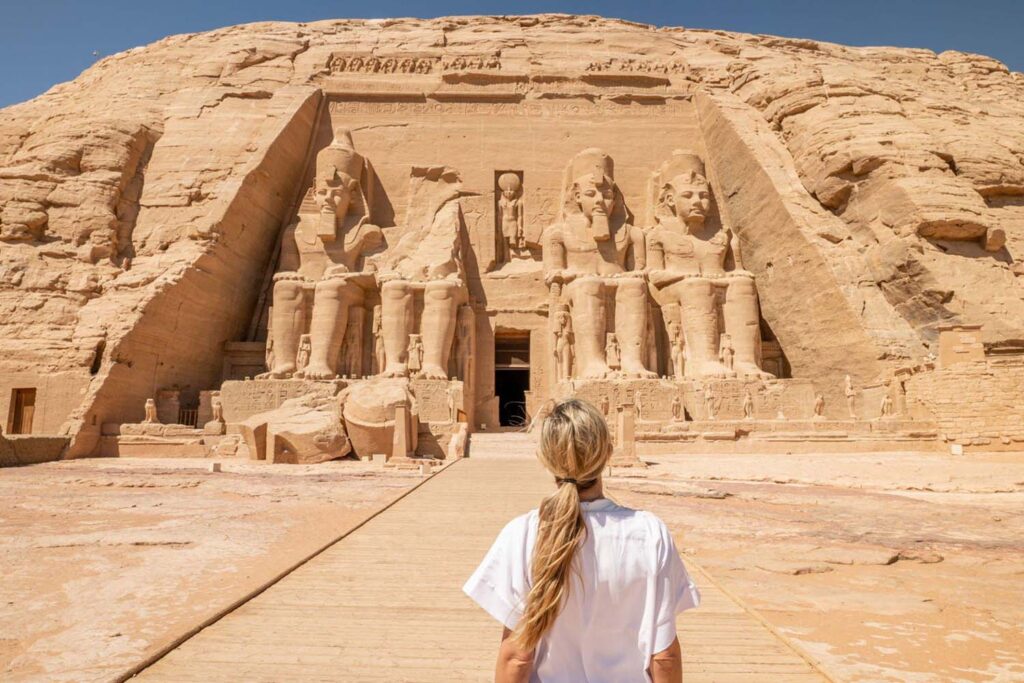
As the sun sets each day, casting its golden hue upon the Ramesseum, the legacy of those who have worked tirelessly to protect it endures. Through their efforts, the temple complex stands not only as a testament to the greatness of ancient Egypt but as a living testament to the enduring spirit of those who have sought to safeguard its splendor for the ages.
Conclusion:
A Timeless Beacon of Ancient Splendor
The Ramesseum temple complex stands resolute, an immortal testament to the opulence and sagacity of ancient Egyptian civilization. Its sprawling expanse, adorned with hieroglyphics and monumental structures, is an open book of history, captivating the imagination of visitors hailing from every corner of the globe. This hallowed ground is more than mere stone; it is a living repository of a culture that forged the very foundations of human history.
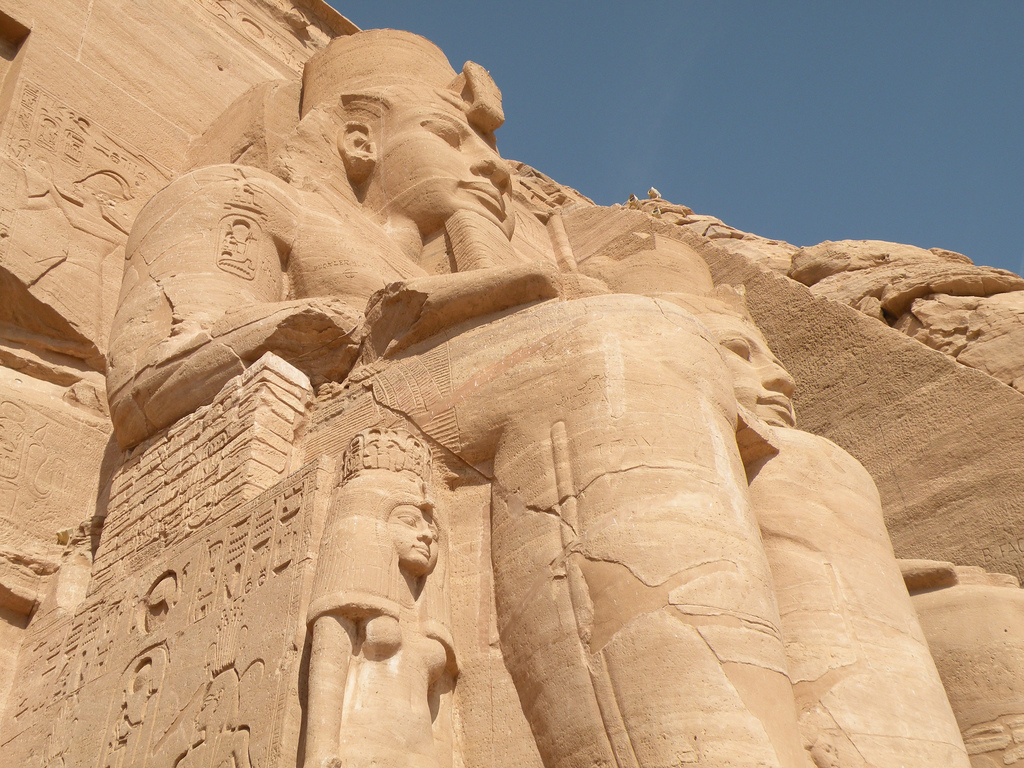
Its architectural marvels, from the grand courtyard to the labyrinthine hypostyle hall, bear witness to the extraordinary prowess of ancient builders. Each column, each etched relief, speaks of an era where craftsmanship and vision were paramount. The colossal statue of Ramses II, though weathered by time’s touch, still exudes an aura of regality, a tangible link to a ruler who left an indelible mark on the annals of antiquity.
The walls, adorned with hieroglyphics and vivid reliefs, breathe life into the past. They narrate tales of everyday life, military conquests, and fervent religious devotion. Through these intricate renderings, we glimpse into the heart of a civilization that revered gods and honored pharaohs with unwavering ardor.
Preservation efforts, undertaken with steadfast dedication, ensure that the Ramesseum endures as a beacon of enlightenment for generations yet unborn. Despite the ravages of time and the perils posed by nature and human touch, this sanctuary of antiquity stands as an unwavering sentinel against the passage of the ages.
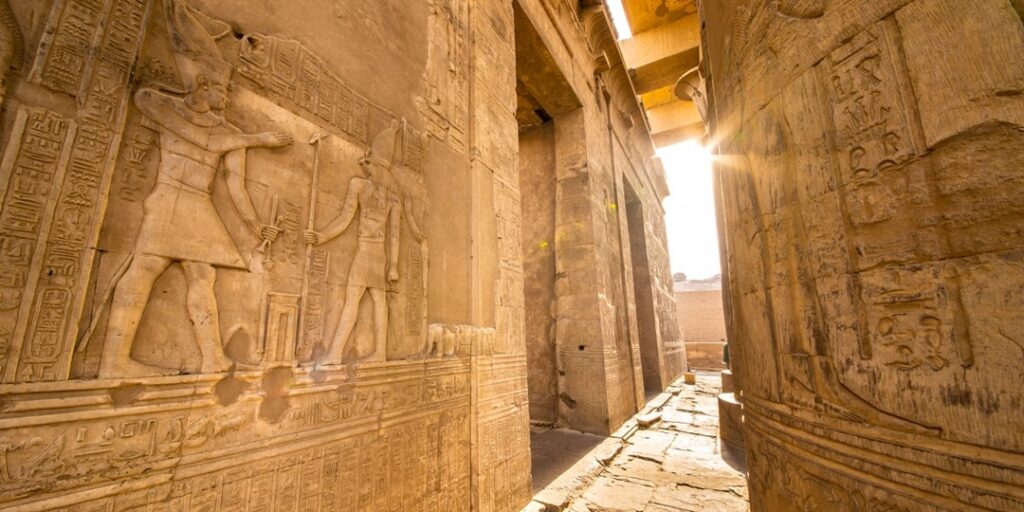
As the sun sets over the Ramesseum, casting its golden embrace upon the ancient stones, we are reminded that this site transcends the boundaries of time. It is a bridge that spans millennia, connecting us to a civilization whose legacy continues to shape our world. In its enduring splendor, the Ramesseum invites us to partake in a journey through time and witness the majesty of an era that forever echoes through the corridors of history.

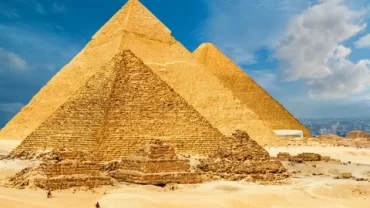

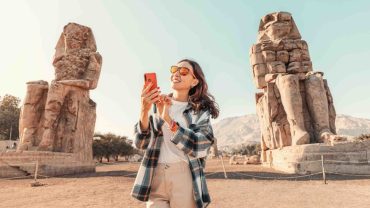

Comment (0)